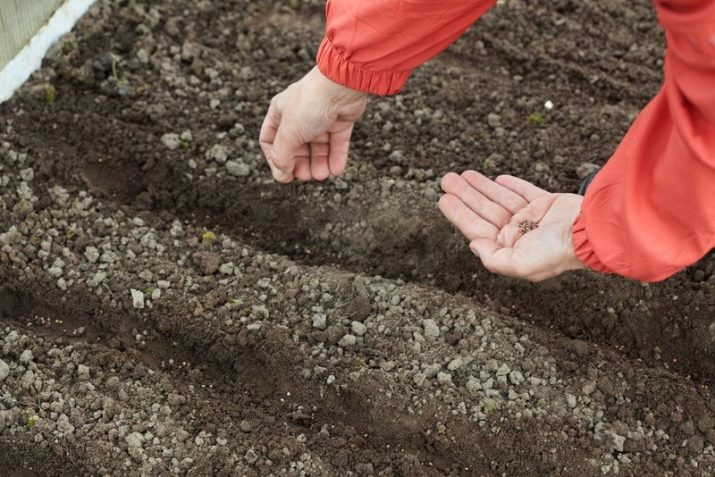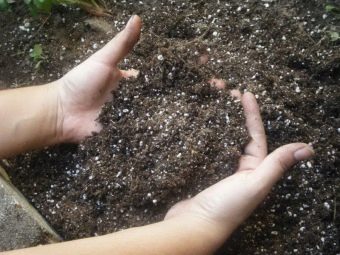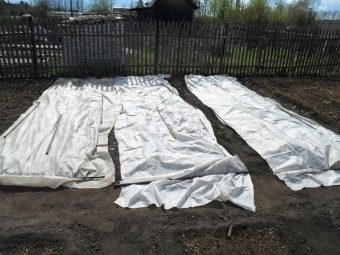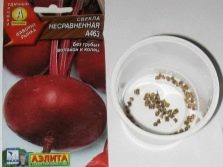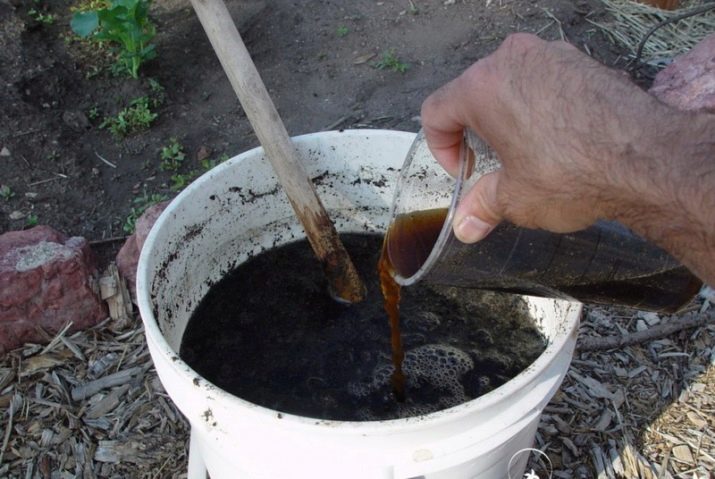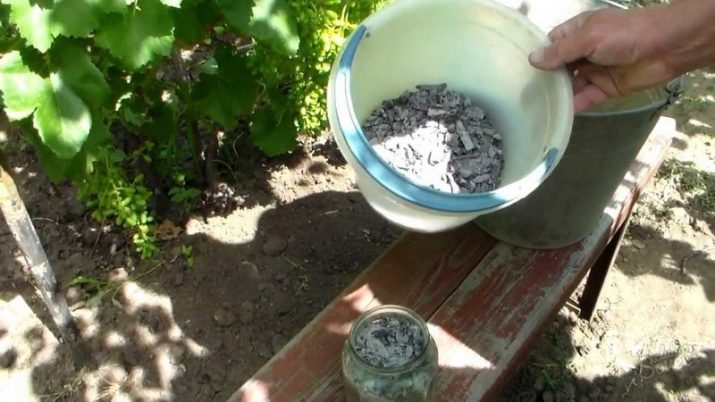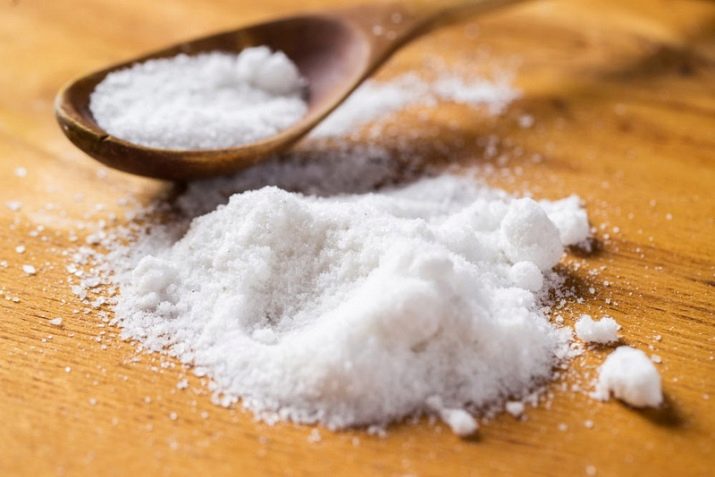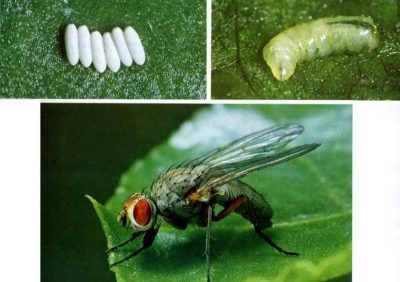How to plant beets and properly care for seedlings?
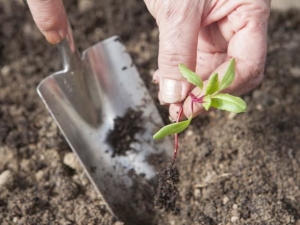
Gardeners and gardeners love to grow vegetables such as beets. Firstly, it is unpretentious and suitable for any climate. Secondly, beets contain many vitamins of group B, PP, C and A, trace elements, including iodine, calcium, potassium and magnesium, iron and copper, zinc and phosphorus. Thirdly, it is waste-free, since all its parts - the tops, the root crop, are used for cooking. Here is such a botherless, wholesome and tasty vegetable can be grown in your garden.
Variety selection
Even a novice gardener will be able to get a harvest of beets on his plot if he adheres to the advice of experienced gardeners and agronomists.
The very first rule is to choose a grade correctly.
Before planting it is important to decide for what purpose beets are needed. Depending on this, choose a sugar, fodder or table variety. Feed beets are intended for feeding livestock. As a rule, this variety is distinguished by its large root size and low palatability.
Sugar variety requires a special approach: a certain soil structure, constant fertilizing during the entire growing season. Careful care is a laborious process, so in the private sector it is practically not planted.
The beet is bred for the preparation of various dishes and canning, therefore it is characterized by bright color, regular shape and excellent taste.
The first two species, as a rule, are intended for large farmland, and the last - for private farming.
Color and taste depends on a variety, growth and ripening speed, vegetable shelf life.
By maturity
The most frequently used criterion when choosing a beet variety is the term of its ripening.
- Early or early varieties have a growing season of 80 to 110 days. Among them are Carilon, Red Ball, Gribovskaya flat, Nastya.
- Mid-season varieties grow from 110 to 130 days. The most popular are Bordeaux-237, Detroit, Sonata, Cold-Resistant 19.
- Late-ripening species it is characteristic to ripen within 130-145 days. Here you can highlight the "Matron" and "Cylinder".
Several popular varieties of beet:
- "Detroit". Root crop is characterized by bright maroon color, no rings are observed on the cut. Dimensions closer to the average, weight - about 0.2 kg. The variety is early and allows you to get a big harvest.
- "Darkie". Beets of medium ripeness with a high degree of yield. By weight, the root crop is slightly larger than Detroit: about 350 grams. The variety is characterized by good preservation during the winter period. Mistresses like that beets do not lose their color when cooking.
- "Cylinder". It differs from other varieties in the form corresponding to the name. The length of the root reaches 16 cm, it has a red color. Among the positive qualities - good keeping quality and resistance to various diseases.
It should be noted that agronomists divide the varieties depending on the climate, so some were bred for the Ural expanses, others for the southern territories. For example, in the Leningrad region such varieties are popular:
- "Merchant";
- “Cold Resistant 19”;
- "Ordinary miracle."
In Moscow and the western regions of the country, various varieties are grown: early and late. Early ripe beets are poorly stored, but it is rich in vitamins, very juicy and tasty. Late varieties do not differ juiciness, but the duration of storage allows the root to use a new crop. Among Moscow Region gardeners such varieties are especially popular:
- "Red Ball". Fruits completely correspond to the name: possess saturated red color and spherical shape. This beetroot - early and drought-resistant. The term of technical ripeness is from 70 to 90 days.
- Sredneranny grade "Mona" ripens in 105 days. The shape of the root is cylindrical, the flesh is bright red, juicy and sweetish.Agronomists recommend it for canning and storage.
- Mid-season "Mulatto" ripens in 130 days. The variety is valued for its good taste and excellent keeping quality in the winter.
Planting dates
Beetroot is a thermophilic vegetable, therefore it is recommended to plant it in spring when the soil is already warm and the air temperature will not fall below 10 degrees.
In each climate zone, this period is different. So, in the Urals and in Siberia, as a rule, it is better to sow beets in May, and in the Krasnodar Territory favorable days come in the second half of March.
Getting a good harvest is in direct proportion to the air temperature during planting, as this determines the time of emergence of shoots. If the temperature is set at +5 degrees, the first shoots will appear after 3 weeks. Warm up to +10 degrees will give the opportunity to sprout already on day 10. At +15 degrees, beet dates sprout on day 6. If there is an opportunity to provide a temperature regime of +20 degrees, then the seeds will pop in on day 3. Competent selection of planting time will positively affect the quantity and quality of the crop.
At the time of planting beet significantly affects its grade. Even June is suitable for late-ripening, and early ones can be planted starting from the end of March.
Seed beets can be planted in the fall in the third decade of October or in November, the exact time depends on the region. It is better to sow when the temperature regime is set at -4 degrees, and the ground is covered with a frost crust. This is necessary to ensure that the seeds "do not wake up" ahead of time, if suddenly warmer. Otherwise they will die. As a rule, this method of planting is popular in areas where summer is short and rainy, for example, in Siberia and the Urals.
Autumn planting has its own characteristics:
- soil preparation is similar to spring planting;
- the bed should be high so that it is not washed away in spring;
- grooves for planting are made deeper (up to 4 cm);
- seeds do not soak before planting;
- the beds and the wells themselves do not need to be watered;
- from above the planting is mulched and covered with straw or spruce leaves, you can use dry fallen leaves;
- in spring, when the sun warms the earth, the covering layer is removed, crops are fertilized with a nitrogen solution, and the bed is closed with a film.
Autumn sowing has its pros and cons. On the one hand, the seeds are hardened during the winter period, so they get sick less. Shoots appear in the spring earlier and, accordingly, ripening occurs faster. On the other hand, such a crop is poorly stored, so it is better to eat it first.
It should be noted that there are special varieties for winter beets. If you use the usual, they will go into the "arrows", there will be no harvest.
Preparatory stage
The planting process always has a preparatory stage, during which it is necessary to prepare the soil, germinate the seeds or grow the seedlings. No exception is the landing of beets.
Soil preparation
Since the beet is thermophilic, it is better to choose a well-lit place for its landing. In vegetable gardens, which are located in lowlands, it is required to prepare a special raised bed for this vegetable.
It is better to foresee where that will be planted next year, then it will be possible to change the planting sites of various plants. So, beets feel good where potatoes, cucumbers, tomatoes, cabbage or legumes grew before it. The beds after onion planting are also suitable. But the neighborhood with celery or garlic is absolutely contraindicated.
Although beet and unpretentious, the soil before planting still requires care, which consists of the following:
- Digging It is better to dig a bed in advance in the autumn, then the earth on it will be more loose. But it can be limited only to spring processing. You need to dig to a depth of about 30 cm, about the bayonet of a shovel.
- Clay heavy earth inhibits the growth of any plants, including beets. Harvest in heavy ground will grow, but the roots will be bitter and tough. Therefore, it is better to add peat, sand, humus to such beds to improve its structure, and also to build long tall ridges for the culture so that the plantings are aired, get enough sunlight and are protected from excessive moisture accumulating in clay soil.
- If the soil, on the contrary, is too “sandy”, then compost and superphosphate should be added to it. It is better not to raise beds, but to use the carpet method.
- Sour earth is recommended pre-deoxidized dolomite flour. Grass growing on the plot can suggest acidity levels. For example, colza, horsetail or wild sorrel indicate the need for liming the soil, lowering the pH. If this is not done, then the beets will produce small and irregular shapes. Agronomists warn that it is impossible to overdo it with deoxidizing agents, since the super-alkaline soil violates the absorption of essential macro- and microelements by the root crop. The optimum pH for beets is about 6-7.
Wood ash can be added to improve soil quality.
Fertilization
Fertilizer beds for beets will have a good effect on its yield. In this case it is worth considering a few rules:
- The root crop can accumulate nitrates; this should be taken into account when choosing fertilizers.
- For the same reason, do not use fresh manure, preferably rotted, for top dressing. According to the recommendations of agronomists, only 3 years after the introduction of manure in the flower bed on it should be planted beets. Fresh litter degrades the taste of the crop and disrupts its presentation.
- If the soil is infertile, then it is improved by adding to 1 square. meter 2-3 kg of humus.
- In the spring when digging should be made of complex mineral fertilizer. Usually, 40 g of superphosphate, 15 g of potassium chloride, 20 g of ammonium nitrate, and 20 g of ammonium sulphate are required for each square meter.
- Favorite compositions for beets are nitrogen-based fertilizers, as well as potash-phosphate fertilizers.
It should be noted that this culture takes a large number of elements from the earth. For example, during the vegetative period, 1 ton of beets "eats" about 9 kilograms of potassium, 7 kilograms of nitrogen and 3 kilograms of phosphorus. And first of all the young root begins to extract the last one, and only then the rest.
Seed preparation
After the package has been opened, the purchased seeds should be carefully selected and eliminated the defective ones. Agronomists recommend to disinfect the planting material in a weak manganese solution.
To increase the degree of germination in the soil, the seeds are soaked, which contributes to their germination. There are several ways to sprout beets:
- in a napkin;
- in sawdust;
- using cotton fabric.
The essence does not change. Seeds are placed in a selected base, which is moistened. The container is installed in a warm place with a temperature not lower than 22 degrees. It should be constantly pouring liquid into the container so that the seeds do not dry out.
This method of preparation solves several problems:
- “dead” seeds are immediately detected, they do not germinate;
- germination process is improved when landing in the ground;
- the time of appearance of the first shoots is accelerated, growth is faster.
Normal water is used for soaking, but some gardeners use a growth stimulator. This solution can be purchased at any specialized store, but there is a recipe for self-preparation from wood ash:
- 2 tablespoons of ash need to fill with 1 liter of warm water, mix and leave to stand for 2 days;
- then the seeds are soaked in this solution, and it is suitable not only for beets, but also for any other vegetable crops;
- after a day, the seeds should be washed and wrapped in a damp cloth for 4 days before landing in the ground;
- moisture napkins need to be controlled, not allowing it to dry.
In addition to the recipe with ashes, there are others in which the seeds are soaked in the resulting solution for a day before planting, for example:
- ¼ teaspoon of boric acid and ½ teaspoon of nitrophosphate dissolved in 1 liter of warm water;
- 1 tsp is added to a liter of warm water. drinking soda.
There is also a method of emergency germination. To do this, the seeds are kept for a day in cold water, and then poured warm for about half an hour (about 35 degrees). Such seeds can be planted immediately in open ground.
In cold areas, they prefer not only to germinate seeds, but also to pre-grow seedlings. And this is done at the discretion of the gardener: some planted beets in special containers, and others - in the greenhouse.
Landing methods
Growing beets in the open field in two ways: seeds and seedlings.
It is possible to plant beet seeds when the earth has already warmed up, constant warm weather has set in on the street, the temperature does not fall below +6 degrees. If you plant it earlier, then all the power will go to the tops.
The mechanism of action will be as follows:
- Treat the seeds before planting: sanitize and germinate.
- Draw grooves on the selected bed, the approximate depth is 1.5-2 cm. Rows should not exceed 30 cm. Water each furrow carefully.
- Seeds should be planted at a distance of 4-7 cm depending on the variety. Then sprinkle with wood ash. Sprinkle with earth and another layer of ash. At the end, the whole bed is mulched with a thin layer of sawdust.
- In order to protect the shoots from possible frosts, plantings are covered with foil. It also creates the effect of a greenhouse and accelerates germination. After the appearance of the first shoots, the film must be removed.
When planting beets with seeds, the main thing is to adhere to the correct depth. It can not be sown too deep, it can not germinate completely, or the process will be delayed for a long time.
The seedling method is popular in the northern regions of the country because it reduces the risk of yield loss. Seedling eliminates the possibility of freezing of seeds in open ground, in addition, seedlings will not need to thin out.
If the seeds are planted in a special container, it should be remembered that for root crops it should be deep. If the planting is carried out in a greenhouse, then you need to properly adjust the temperature, without abrupt changes. In warm areas, you can plant beets in open ground, but under the film.
For growing seedlings at home using a soil mixture for vegetable crops. It is purchased in stores. However, the soil substrate can be prepared independently. For these purposes, mix 2 parts of ordinary land from the garden and compost, 4 parts of peat and 1 part of sand. For every 10 kg of soil produced, add 1 cup of ash. As a disinfection mixture is heated in the oven. For the formation of beneficial bacteria, the soil is sealed in a bag and left for a week. After all these manipulations, the substrate can be used for seedlings.
Growing with seedlings is simple:
- Seeds are planted in a special container or greenhouse for 3-4 weeks before transplanting in open ground, around the beginning of April. Planting depth should not exceed 1.5 cm. The distance between the seeds should be left up to 5 cm, between the rows - up to 8 cm.
- Water sprouts need to spray, so as not to blur the top layer of the earth.
- Containers are moved to a warm dark place. You can cover them with plastic or glass sheets on top, so the effect of a greenhouse will be provided. In this case, it should be remembered that you need to open seedlings daily to air.
- At emergence of shoots containers need to be exposed on the lit place.
- When 2 leaves appear on the seedlings, a pick should be carried out, removing weak and damaged sprouts.
- A few days before planting, it is necessary to begin the quenching procedure: open the windows on which the seedlings are standing, ventilate the greenhouse, or lift the film if it is planted in open ground.
- Immediately before landing, an illuminated spot is selected on the site. At a distance of 25 cm from each other, grooves are drawn and well spilled water. In the dry ground to plant beets can not. The depth of the hole should correspond to the length of the small root, the roots should not be bent. Seedlings can be planted in the ground only after the appearance of 4 of this leaf.
- Before you get a sprout from the tank in which it was grown, you need to pour plenty of soil in it. The seedlings are carefully taken out together with the earthy clod and transferred to the grooves prepared for planting. The distance between the shoots must be at least 10 cm.
- After the layout, the grooves are filled with earth and wood ash.
- The first 20 days is better to keep landing under the covering material. It will save them from unexpected frosts and the sun.
- When shelter is removed, the ground is mulched. This procedure is optional, but experienced gardeners recommend not to neglect it, because the mulch retains moisture and prevents the growth of weeds.
Landing pattern
Experienced agronomists advise planting beets on the edges of the beds with other crops, such as onions, cabbage, greens or tomatoes. They are good neighbors. And the root crop will grow in this case, larger than in the garden.
If a separate ridge is assumed for a beet, then the following ways of its landing can be distinguished:
- Single line method Usually used on long narrow beds, when the beets are planted across. The distance between the seeds is 10 cm, and between the rows - up to 25 cm.
- Two-line. Landing furrows are formed in pairs. The aisle in the pair - 20-25 cm, between couples - up to 0.5 m. This method is designed to facilitate the work on the processing and irrigation of beet seedlings.
- Three-line method similar to two-line alternating not two, but three furrows.
Before planting in any way, the bed should be loosened to a depth of 5 cm. It is better to plant seedlings or sow seeds in the evening or in cloudy weather. Then the landing will not die from excessively hot sun.
If immediately before disembarkation there was a dry time, then the earth must be shed with water two hours before work. In wet ground it is enough to water only the landing grooves.
Care rules
To grow a good harvest of beets, you need not only to plant it well, but also be able to care for it. The secrets of care are simple: you need to thin out, loosen, water and feed the beds in time.
On the third or fourth day after disembarkation, carefully patch the bed. This will saturate the soil with oxygen and allow the seedlings to appear faster and more friendly.
As soon as the first sprouts appear, the earth is loosened again to ensure air access to the roots. If this is not done, especially after heavy rains, shoots may become ill or begin to rot. At the initial stages, the process of loosening can be done with a normal table fork, so as not to damage the young seedlings.
Weeding beets is required regularly, as it is strongly affected by weeds.
Agronomists in large areas irrigate the soil with either kerosene or a solution of 2-3 grams of saltpeter and 1 liter of water (per 1 square meter). This eliminates weeds for the entire vegetative season. For country land it is better to adhere to time-tested recipes: thorough weeding and timely loosening of the soil.
Beets are very fond of water, but you can accidentally pour it, so it’s better to use the advice of experienced gardeners when you care:
- To the beets quickly rose, do not give the ground to dry. It should be slightly wet and not crust.
- Watering is better on the tops, and root, and the leaves will get enough moisture.
- Watering frequency - 1 time in 7-8 days.Reduce the interval between irrigation can be in dry periods, because if you water a little, the roots will be flabby and not juicy.
- Before harvesting for 1.5 weeks of irrigation should be abandoned.
- The best option is the consumption of a bucket of water per 1 square. meter beds. Adult plants are watered at the rate of 2 buckets per square meter.
- It is better to water from a watering can or with a hose, but with a shower head. So the soil is saturated with moisture, and the leaves are washed.
If the beets are planted with seedlings, then thinning is not required, it is enough to simply transplant it to the selected area with a certain interval between the sprouts. If the beets were planted with seeds, then it will have to be thinned. The fact is that this culture is multi-edged, that is, one seed can give up to 6 sprouts.
It is easier to thin out the beets after watering, then the earth will not cling to the plant being removed and pull the neighboring ones with it. The procedure is carried out 2 times per season.
If you see that 4 leaves are already growing on the leaves, it is time to thin out the beds, to free up space for the normal development of root crops. Without thinning the plot, there is a risk of getting a small crop. Removed weak and closely growing plants. At the same time weed the beds. Better to leave between root crops about 5 cm. By the way, the torn plant can be transplanted to where the void was formed and the seeds did not sprout. But this can only be done if the earth was soft and the root was not damaged during ejection.
As soon as the root crop itself begins to fasten, the beets are thinned a second time, increasing the distance between the bushes to 10-15 cm. Weathered specimens can already be used as food, for example, for cooking soup. It is not recommended to leave a distance greater than the specified one, because a large copy of the root crop that is difficult to store and use will grow over a large area.
When preparing the soil for planting, mineral substances have already been added to it, so the first dressing can be done after the first thinning. Often for these purposes using the infusion of herbs.
In the following, these types of nutrient mixtures are used:
- Brine from 1 tablespoon of salt to a bucket of water. If this composition spills the bed after the second thinning, the crop will be more sweet. This solution is used to increase the sugar content of sugar beet, processing them planting 3 times: with the appearance of sprouts, 2 weeks later and after the formation of 6 leaflets.
- Solutions based on boron help eliminate hollows in the core of the root. To do this, use the finished composition "MagBor" or boric acid (half a teaspoon per bucket of water). The resulting composition is enough to handle 1 square meter.
- A mixture based on cow dung or chicken manure that is saturated with nitrogen. To obtain a concentrate take 1 kg of mullein per 10 liters of water. Insist for 5 days. After that, 1 liter of the concentrated solution is diluted in a bucket of liquid and watered on a bed with a watering can. Experts recommend then pour it with plain water, cleaning the leaves. The resulting solution is treated with 10 square meters of land.
- Ash solution is prepared from 1.5 cups of wood ash and a bucket of liquid. Some gardeners stir them, and someone just pours ash on the beds and pours on top. Ash contains a lot of potassium.
- Phosphorus-potassium fertilizers. They can be purchased in specialized stores. As a rule, they are used during the second thinning.
- At the initial stage, when not only the fruit develops, but also the leaves, beetroot should be provided foliar top dressing based on copper, molybdenum and boron. The aqueous solution is sprayed on the leaves.
- Sodium saturation occurs due to non-iodized salt, 60 g of which is diluted in 10 liters of liquid. This mixture is processed tops.
Agronomists warn that fertilizing beets should be carried out with organic substances, because of the mineral in it, voids are formed.
Beets "love" to accumulate nitrates, so you need to be careful with fertilizers. Nitrogen should be given in small portions. Its best form is urea.
Feed crops need 2-3 times per season. The first time it occurs after thinning, and the second - when forming a root crop with a size slightly larger than walnut.
Diseases and pests
If competently care for crops, do not neglect preventive measures, then you can grow a quality crop.
Disease of beets can be prevented if preventive measures are taken, which include:
- compliance with the rules of sowing: terms, conditions, etc .;
- disinfection of seeds and soil for seedlings;
- preparation of beds: digging in the fall and spring, cleaning of old plants, application of fertilizers.
As a rule, beets are prone to diseases peculiar to all root crops:
- Fusarium - a fungal disease. Manifested in a change in the color of the leaves of the tops, they turn yellow or discolor. Next, the tops will wither and die, and the fungus will move to the root. Usually begin to hurt plants that lack moisture. Also, with increased acidity of the soil, beets may be subject to fusarium. It is impossible to cure a disease, only to destroy infected plants in order to save the neighboring ones. In order to prevent and prevent disease in the future, mineral fertilizers with boron content should be applied to the ground, lime overly acidic soil should be carefully dug up between rows, weed regularly, and water should be planted.
- Corneed affects the seedlings of beets, more adult plants are resistant to infection. With the defeat of a young root rots, so the sprout dies. Usually the disease progresses in the lowlands, on heavy, overly wet soils. Also, its appearance is facilitated by a high degree of soil acidity, insufficient loosening, which prevents saturation of the earth with oxygen. Since this is an infection, the disease can be transmitted by seeds or accumulated in the tops. The following measures are recommended as a struggle: soil deoxidation at the preparatory stage, seed dressing, compliance with sowing rules, careful weeding and loosening of the bed, destruction of waste after harvesting.
Agronomists recommend the use of Bordeaux 237, which is less susceptible to infection.
- Downy mildew or perinospora. The disease develops in cold, wet weather. The plant first turns yellow, and then the leaves curl and die. The most effective method of struggle is the treatment of crops with Bordeaux mixture. As a preventive measure, agronomists advise to destroy diseased plants and burn the tops after harvesting.
- Fomoz, or heart rot expressed in disease and leaves, and root crops. If brown spots appeared on the leaf, then you should sound the alarm. First, the lower leaves are damaged, then the rest, and if they are not treated, the disease will reach the peduncle. Root crops infected with fomoz, rot during storage. Infection caused by cold weather with abundant prolonged rains. Also contributes to its development is the lack of boron in the soil. Pathogenic disputes can live in last year's leaves, left on the site after harvest. Therefore, a preventive measure is to burn the foliage immediately after harvesting and disinfect seeds and seedlings with Fundazol. If an infected vegetable is found in storage, then storage boxes should be disinfected.
Bacterial diseases are treated with fungicidal compounds, and viral ones are not treated, such plants are immediately destroyed.
As for the pests destroying the crops of beets, among them are the following:
- Beetle or beetroot bug spoils the foliage. Both the beetles and their larvae cause damage to the crops.The larvae eat tops, leaving holes in the leaves, which disrupts metabolic processes and destroys the shoots. Beetles feed on sprouts. Pests are bred not on beets, but on weeds, so the struggle must first begin with weeding. If the damage to crops is strong, then resort to the use of insecticides "Basudin", "Siren." In the private sector, tobacco infusion is used, which is obtained by infusing a mixture of 50 grams of tobacco and 1 liter of water during the day. The treatment is carried out twice.
- Flea or beet weevils harm the roots themselves. For preventive purposes, it is necessary to destroy all weeds after harvesting, which usually serve as a place for the development of pests: quinoa, mar, flax and others. It is also necessary to weed and dig up the aisles. Beetles hibernate inside the soil, delving into it up to 30 cm. Therefore, it is very important to dig the ground deep enough. Pests come out in late April - early May, when the sun finally warms the earth. In addition to beet culture, weevils also damage other plants: legumes, carrots, cucumbers, and cabbage crops.
- Sheet beet aphid "Lives" and feeds on the back of the leaves, and therefore they twist, thereby slowing the growth of the root. Like any kind of aphid, it is destroyed by ladybugs. With the dominance of crops by insects should resort to organophosphate insecticides.
- Beet fly. This insect itself has no effect on crops, but it lays eggs on the inner surface of the haulm. The hatched larvae gnaw in the leaves passages and cavities, which leads to their death. Beets with damaged tops grow small and savory. The struggle must begin in the fall with a deep digging of the land and careful disposal of weeds. During weeding, it is necessary to pick off the infected leaves in order to protect others.
In addition to the insects mentioned above, the beet is harmed by the caterpillars of the meadow moth and the beetle beetle, the larvae of beetles and the beet mining flies. The main agroprotection measures carried out in the early stages of insect development to reduce their numbers:
- When choosing a landing site, it is necessary to abandon the territories in which a large number of pests were observed in the previous year.
- Always need to disinfect the seeds.
- It is necessary to withstand the sowing time. The soil should first be fertilized.
- Important autumn and spring soil quality treatment: deep digging, removal of weeds and their destruction, especially infected.
- Systematic thinning and weeding not only of beet beds, but also of other vegetable crops, as well as between rows, nearby paths, ravines.
- Regular thorough loosening of the soil between the rows to destroy the larvae of pests.
- Pollination of crops with a mixture of tobacco, lime and ash (1: 1) 3 times every 4 days at the time of the appearance of pests.
- Large beet beds are surrounded by grooves to collect weevils and do not forget to collect them daily for destruction.
- In the period of development of the meadow moth and the burrowing scoops, agronomists advise to use special traps in which the larvae fall. It is important to clean them in time.
- Against aphids of any kind can be fought with a solution of "Green Soap".
Insecticides should be resorted to in extreme cases. Usually use the following:
- "Hexachloran", which pollinate leaves damaged by beet flea;
- "Fufanon", "Bi-58 New" used to combat the larvae of the mining moth, affecting the tops;
- "Pyrethrum" for spraying crops from aphids.
When harvesting the affected roots better to destroy, so they do not infect the rest.
See how to plant beets and care for them in the next video.

















